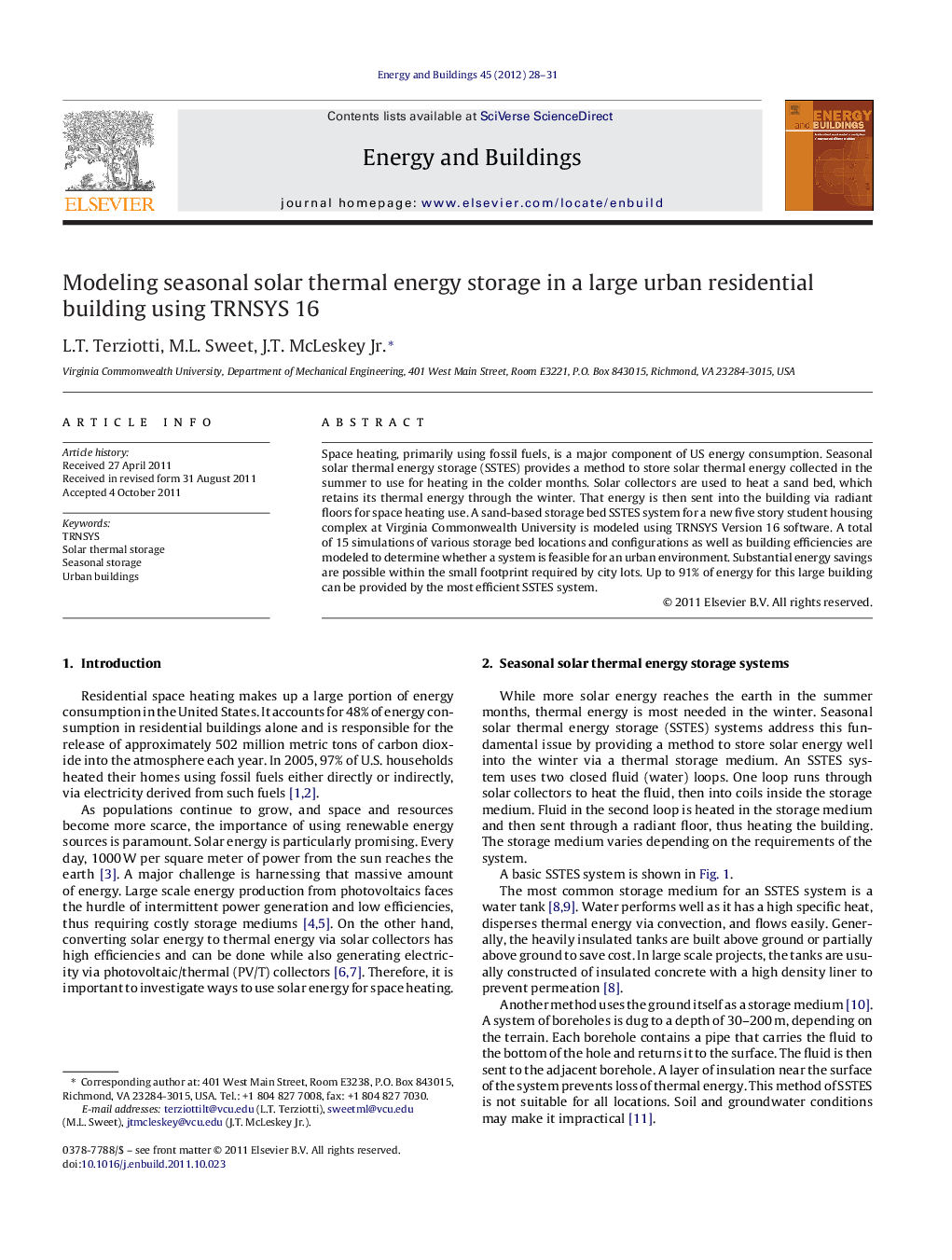| Article ID | Journal | Published Year | Pages | File Type |
|---|---|---|---|---|
| 263980 | Energy and Buildings | 2012 | 4 Pages |
Space heating, primarily using fossil fuels, is a major component of US energy consumption. Seasonal solar thermal energy storage (SSTES) provides a method to store solar thermal energy collected in the summer to use for heating in the colder months. Solar collectors are used to heat a sand bed, which retains its thermal energy through the winter. That energy is then sent into the building via radiant floors for space heating use. A sand-based storage bed SSTES system for a new five story student housing complex at Virginia Commonwealth University is modeled using TRNSYS Version 16 software. A total of 15 simulations of various storage bed locations and configurations as well as building efficiencies are modeled to determine whether a system is feasible for an urban environment. Substantial energy savings are possible within the small footprint required by city lots. Up to 91% of energy for this large building can be provided by the most efficient SSTES system.
► We examine the feasibility of seasonal solar thermal energy storage in an urban building. ► We model the five story residential building using TRNSYS 16. ► Nearly 90% of the building heat load can be met by renewable energy.
